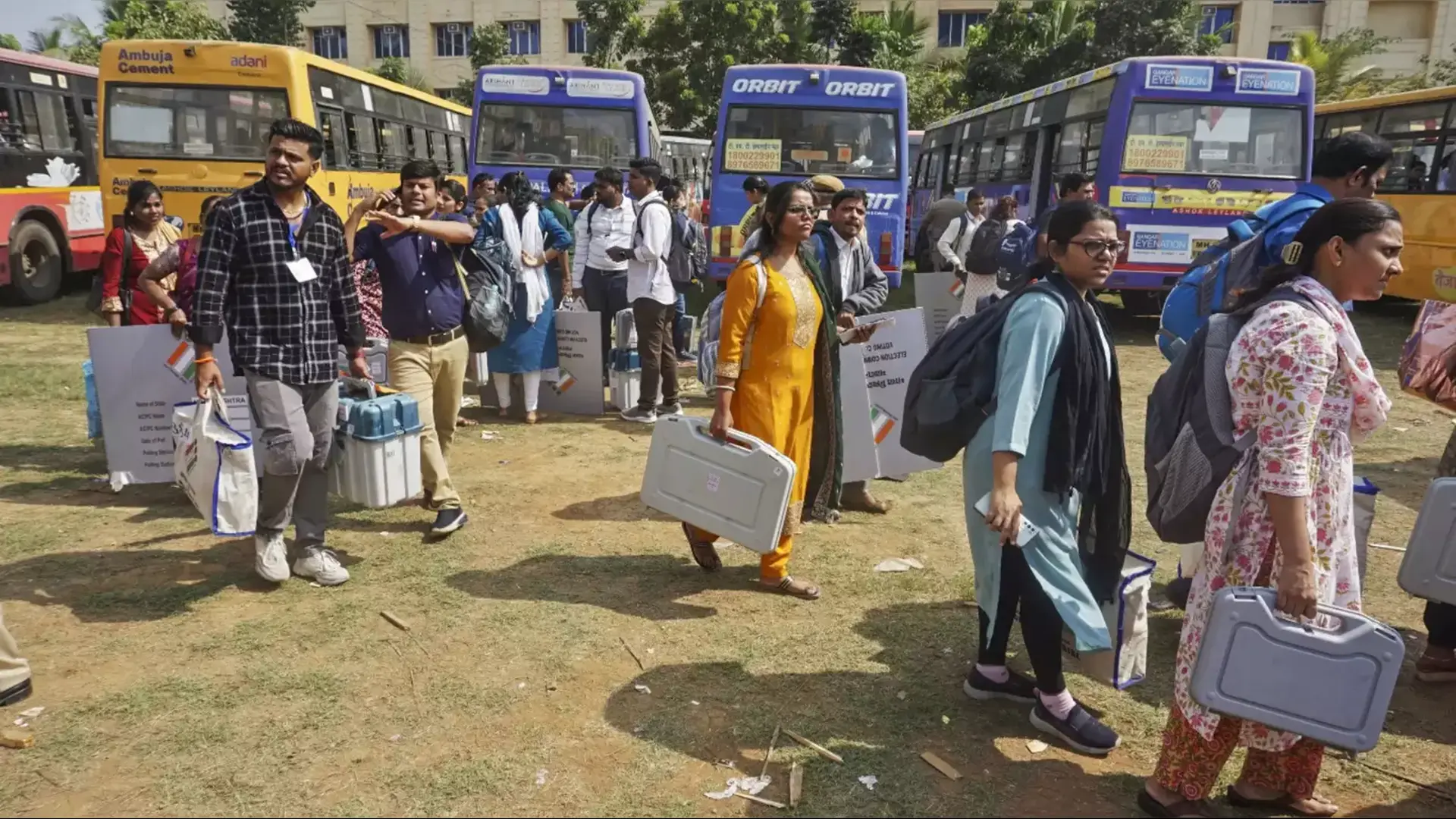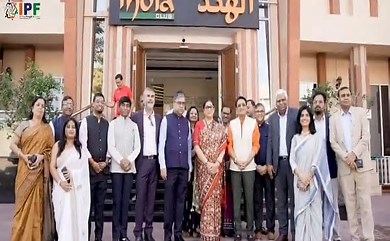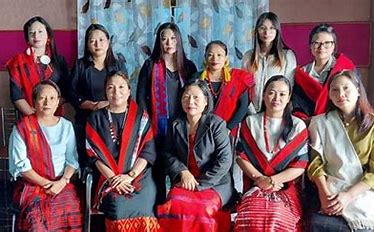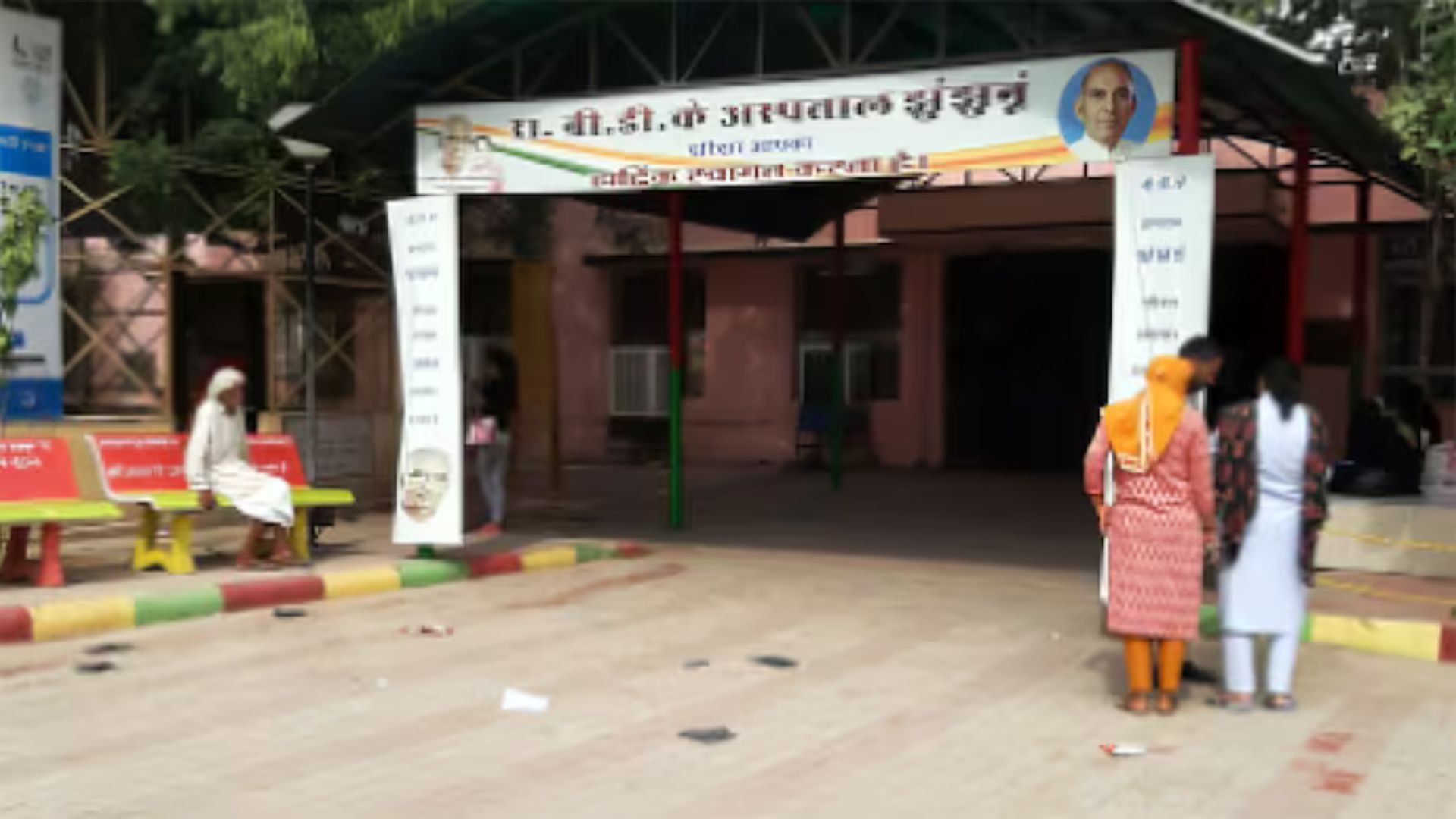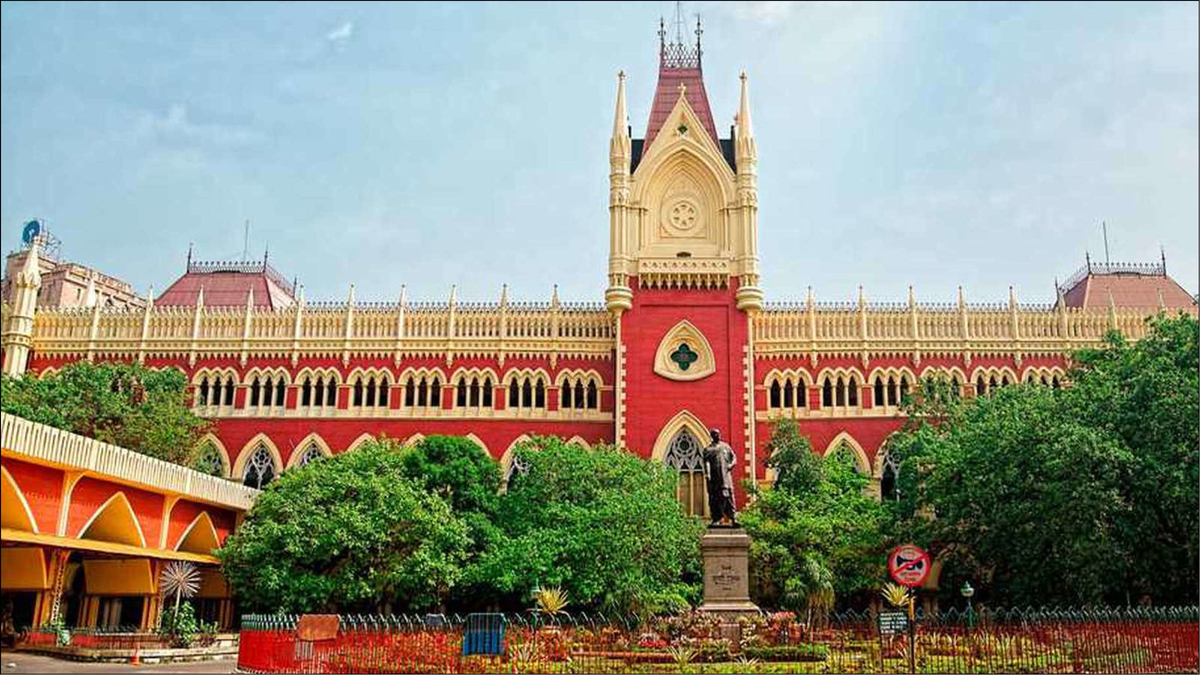
In a great respite for widowed/divorced daughter having no income, the Calcutta High Court on 7 April, 2021 in a latest, learned, laudable and landmark judgment titled Sonali Hatua Giri Vs Union Of India and others in WPA 13806 of 2019 (Via Video Conference) has declared Clause 5.2.5 of the Guidelines for Disbursement of Central Samman Pensions followed by Authorized Public Sector Banks, issued by the Ministry of Home Affairs as being violative of Article 14 of the Constitution of India after observing that the “blanket exclusion of widowed/divorced daughters, including even those who do not have any personal income in lieu of maintenance or otherwise, is patently de hors Article 14 of the Constitution of India which enshrines the guarantee of equality to all citizens”. It must be mentioned here that the observation came in a petition challenging the vires of Clause 5.2.5 of the Scheme providing for disbursement of pension to freedom fighters under Central Samman Pension Scheme. While observing that the object of the Scheme was to be formulated as “a token of honour by a grateful nation to the honourable freedom fighters and their dependents, the Calcutta High Court also made it explicitly clear that it was not necessary that the term “dependents” under the Scheme has to be necessarily be in consonance of other laws such as Succession Acts of various religious communities.
To start with, a Single Judge Bench comprising of Justice Sabyasachi Bhattacharya of the Calcutta High Court who has authored this brief, brilliant, bold and balanced judgment sets the ball rolling by first and foremost observing that, “The challenge presently under consideration is to the vires of Clause 5.2.5 of the Guidelines for Disbursement of Central Samman Pensions to be followed by Authorized Public Sector Banks issued by the Ministry of Home Affairs, FFR division. The said Scheme is for disbursement of pension to freedom fighters under the Central Samman Pension Scheme. The guidelines-in-question provide the modalities of such disbursement.”
While elaborating on the facts of the case, it is then pointed out in the next para that, “The petitioner is the daughter of a deceased freedom fighter, who had been getting pension under the said Scheme for the Swatantrata Sainik Samman Pension till his demise on December 4, 2012. The petitioner was married but subsequently got a decree of divorce on March 19, 1999 and has since been residing at her paternal house along with her son and was dependent on her father since she had foregone her right of alimony from her husband.”
While continuing in a similar vein, the Bench then adds in the next para that, “The petitioner submits that after the demise of her father, her widowed mother also applied for grant of such pension in her favour. However, such representation was kept pending for an inordinately long time and ultimately the mother of the petitioner died on February 18, 2019 as well, leaving behind her son and daughter, that is, the writ petitioner.”
What is worse, the Bench then states in the next para that, “Subsequently, the petitioner also made a representation before respondent no. 5 requesting for disbursal of family pension in her favour as a dependent daughter. However, such request has not yet been considered till date.”
To put things in perspective, the Bench then states that, “At the outset, the challenge to the vires of Clause 5.2.5 is required to be considered, since the decision on the same will affect the outcome of the writ petition otherwise. The relevant provision in the Guidelines is found in Clause 5.2 thereof, which deals with transfer of pension to spouse(s)/daughter(s). Clause 5.2.3 stipulates that the spouse/daughter must fulfil the twin conditions of being “unmarried” and “having no independent source of income”.”
To be sure, the Bench then points out in the next para that, “Clause 5.2.5, on the other hand, stipulates that widowed/divorced daughter is not eligible for Samman pension.”
It must be added here that the Bench then notes that, “By placing reliance on an unreported Order dated July 29, 2016 passed by the Punjab and Haryana High Court in Letters Patent Appeal No.171 of 2015 (Khajani Devi Vs. Union of India and others), learned counsel submits that the benefit of the Scheme is admissible to a divorced daughter. A two Judge Bench of the Supreme Court, by an Order dated September 27, 2019 passed in SLP (C) No. 02353 of 2019 (Union of India and others Vs. Khajani Devi) was pleased not to interfere with the same on the view that the order adopts a progressive and socialist constructive approach.”
But the Bench then envisages in next para that, “However, the Himachal Pradesh High Court had taken a contrary view in an Order dated July 18, 2019 passed in CWP No.1504 of 2019 (Tulsi Devi Vs. Union of India and another). A three-Judge Bench of the Supreme Court, by an Order dated May 28, 2020 passed in an SLP arising out of Diary No.7497 of 2020 (Tulsi Devi Vs. Union of India and another) was pleased to issue a notice in the matter. Such issue is, thus, pending adjudication before the Supreme Court and it is argued that judicial decorum warrants that since the Supreme Court is in seisin of the mater, this Court should not take any view at this stage.”
Be it noted, the Bench then observes that, “As regards the contention of respondent no.1 that judicial decorum ought to constrain the hands of this Court due to pendency of a similar issue before the Supreme court, such contention is not acceptable, at least in the present case, since mere pendency of challenge in a different case cannot have any direct bearing on the adjudication at hand. That apart, in view of the implicit urgency involved, since the petitioner has no income to sustain herself and her minor son without any income, the matter pertains to her livelihood and cannot be stalled indefinitely for the adjudication of the matter pending before the Supreme Court.”
For the sake of clarity, the Bench then adds in the next para that, “Although the dismissal of a Special Leave Petition by the Supreme Court does not tantamount to affirmance of an order on merits, which would lend binding force to such order as the law of the land is declared by the Supreme Court, the Punjab and Haryana High Court had taken a clear view that divorced daughters are also entitled to benefit under the Scheme-in-question.”
Going further, the Bench then also adds in the next para that, “The view taken by the Himachal Pradesh High Court did not lay down any ratio on the vires of Clause 5.2.5 and/or decide the question which has fallen for consideration before this Court. In the said case, being Tulsi Devi (supra), the Himachal Pradesh High Court held that the “Swantrata Sainik Samman Yojana” has been launched as a mark of respect to the freedom fighters whereas in the case of armed force personnel or the Central/State Government pensionaries/employees, the pension is not a ‘bounty’, but a property. Thus, a line of distinction was drawn between such pensions and the pension payable to freedom fighters and their heirs.”
On a humble note, the Bench then moves on to then observe that, “With utmost respect, even without going into the question of parity with other pension schemes, the view of the Punjab and Haryana High Court is more applicable in the present case. In the said judgment, it was held that it would be a travesty to exclude a divorced daughter when an unmarried daughter finds mention in the list of eligible dependents. It was further held that there would be no rationality to the reason for such distinction, particularly when the divorced daughter is the sole eligible dependent and qualifies for the benefit. It was held that a beneficial scheme such as the one in hand should not be construed on a strict interpretation, which tends to disapprove the claims of the benefit, to result in virtual frustration or negation of the laudable motive of the scheme itself.”
Adding more to it, the Bench then also observes that, “In my view, the ratio laid down by the Punjab and Haryana High Court in Khajani Devi (supra) is also applicable in the present context and appeals to the judicial conscience on a higher footing than the Himachal Pradesh report.”
In hindsight, the Bench then while candidly applying the Constitutional principles adds that, “A combined reading of Article 14 of the Constitution of India, which is a fundamental right of equality before the law, and Article 39(a), ensures that the State is to direct its policy towards securing such end. Clause (d) of Article 39 also ensures that there is equal pay for equal work for both men and women. Although Article 39 is a Directive Principle of State Policy, not directly enforceable in law, the fundamental rights of the citizens of India ought to be considered in the context of the directive principles to lend teeth to the intentions of the framers of the Constitution of India.”
As a corollary, the Bench then ostensibly goes on to set the record straight by observing that, “In view of Clause 5.2.3 having conferred eligibility on spouses/daughters who are unmarried and have no independent source of income, Clause 5.2.5 of the guidelines is ex facie irrational, since it excludes widowed/divorced daughters from the eligibility.”
What’s more, the Bench then concedes that, “The scheme was formulated as “a token of honour by a grateful nation to the honorable freedom fighters and their dependents” as per its own language.”
Without mincing any words, the Bench then waxes eloquent to hold that, “It is not necessary that the term ‘dependents’ as used in the scheme has to be in consonance with Succession Acts of various religious communities. However, even if we take into consideration the acts in question, no line of distinction has been drawn between divorced and unmarried daughters. For example, if we read Sections 8 and 9, in conjunction with the Class I of the Schedule to the Hindu Succession Act, 1956, it will be evident that the Class I heirs include not only the widow but also the daughter of the deceased. Hence, no line of distinction has been drawn between “unmarried’ and “divorced” daughters. A criterion which defies logic cannot be “intelligible” in the true sense of the term.”
Not stopping here, the Bench then further holds that, “A bare perusal of Clause 5.2.3 of the guidelines in-question indicates that there is already a safeguard against abuse of the provisions of the scheme by including the yardstick, “having no independent source of income” as a condition of eligibility. Such qualification circumscribes the eligibility of unmarried daughters. Since, as per the arguments of the respondent no.1, an analogy has been sought to be drawn with the respective Matrimonial Laws of different communities, we ought to look into the efficacy of such remedies on the touchstone of efficacy.
Truly speaking, the Bench then concedes graciously that, “All the recourses and legal remedies open to divorced and widowed daughters require long-drawn litigation and mere rights available in the statute books. In order to get the fruit of such litigation, a widowed/divorced daughter has to wait till the end of litigation. The amount actually granted to such daughter by the court of law also acquires relevance vis-à-vis her subsistence requirements. Legal provisions cannot meet the pangs of hunger and/or urgent necessity of sustenance of human beings. As stipulated in case of unmarried daughters, widowed/divorced daughters also qualify as unmarried but have been excluded from the pension scheme. In the event Clause 5.2.5 was not there, the expression ‘unmarried’ could very well include within its purview widowed/divorced daughters of the pension holders as well, since their marital status would also be on an equal footing with unmarried daughters. The mere possibility of a legal remedy, or an order of court granting meager amount as maintenance is not adequate to meet the necessities of widowed/divorced daughters but they may also be dependents of their father, being the freedom fighter, in the event they do not/cannot opt for taking recourse to legal remedies and do not have income sufficient to maintain themselves.”
In the same vein, the Bench then also makes it clear that, “Since the rider, “having no independent source of income” already qualifies unmarried daughters in Clause 5.2.3 of the guidelines, such test acts as a sufficient safeguard to prevent abuse of the pension scheme by widowed/divorced daughters of the freedom fighter who otherwise have an independent source of income, be it from alimony/maintenance or from some other source. On the other hand, it may very well be that a spinster daughter of the freedom fighter has an independent income of her own, even if she does not have legal remedy as available to the widowed/divorced daughters from their matrimonial family.”
Quite remarkably, the Bench then holds that, “Since the aforesaid safeguard is already existing, the blanket exclusion of widowed/divorced daughters, including even those who do not have any personal income in lieu of maintenance or otherwise, is patently de hors Article 14 of the Constitution of India, which enshrines the guarantee of equality to all citizens. In the present case, the classification is worse than gender bias, since unmarried daughters have been included within the scheme but widowed/divorced daughters who stand on the same footing, having no independent source of income, have been excluded.”
Of course, the Bench then rightly states that, “Even going by the Succession Acts, daughters, irrespective of qualification, are entitled to the property of the deceased as heirs.”
Frankly speaking, the Bench then candidly concedes that, “Hence, the mere existence of a right in a statute book to get maintenance from the matrimonial family is not at all sufficient to meet the financial requirements of those widowed/divorced daughters who do not have any income.”
While setting the record straight, the Bench then adds that, “Having or not having income is undoubtedly an intelligible differential, which can easily be incorporated if widowed/divorced daughters are also brought within the purview of ‘unmarried’ daughters. Thus, as in the event an unmarried daughter who has no income is ineligible for the pension, widowed/divorced daughters stand on a similar footing as daughters of the deceased and shall not be eligible anyway if they have any independent source of income, which can very well be alimony or maintenance as well.”
In the same vein, the Bench then further adds that, “However, as far as daughters having no independent source of income are concerned, widowed/divorced daughters stand on an equal footing with a spinster daughter as heirs of the deceased freedom fighter. The marital status of all of them is “unmarried”. Thus, the criterion of exclusion of widowed/divorced daughters, as sought to be projected by respondent no.1, is untenable in the eye of law. As such, Clause 5.2.5 is patently violative of Article 14 of the Constitution of India, which ensures equality among people standing on the same footing, in the absence of reasonable classification or intelligible differentia.”
In light of what is stated above, the Bench then holds that, “In view of the above discussions, the preliminary point is decided by declaring Clause 5.2.5 of the Guidelines for Disbursement of Central Samman Pensions to be followed by Authorized Public Sector Banks, issued by the Ministry of Home Affairs, FFR Division vide Memo No.45/03/2014 – FF(P) ultra vires, being violative of Article 14 of the Constitution of India.
On a final note, the Bench then lays down that, “The expression “unmarried” as used in Clause 5.2.3 of the said Guidelines shall also include widowed/divorced daughters as eligible for the Sainik Samman Scheme-in-question, provided they satisfy the other test of having no independent source of income. Further orders on the merits of the writ petition shall be passed on the next returnable date.”
To conclude, the Single Judge Bench of Justice Sabyasachi Bhattacharya of Calcutta High Court has most commendably, most courageously and most convincingly held that freedom fighter’s widowed/divorced daughters having no income are entitled to his pension and their blanket exclusion violates Article 14 of the Constitution. Justice Sabyasachi while citing the relevant rules as also relevant case laws has forwarded convincing reasons for holding freedom fighter’s widows and divorced daughters having no income to be entitled to their husband and fathers pension as discussed above and so there is no reason as to why they be placed in blanket exclusion. Thus we see that the dice rolled in their favour ultimately as the judgment was pronounced most markedly by the Calcutta High Court as discussed above!


